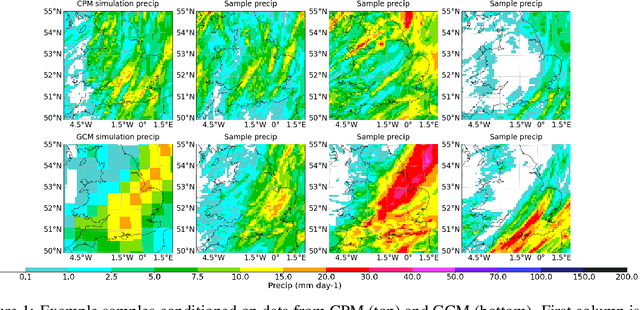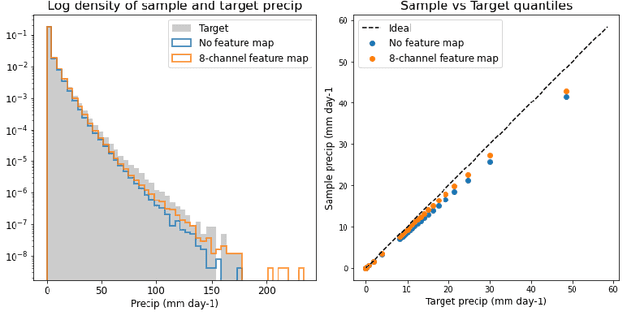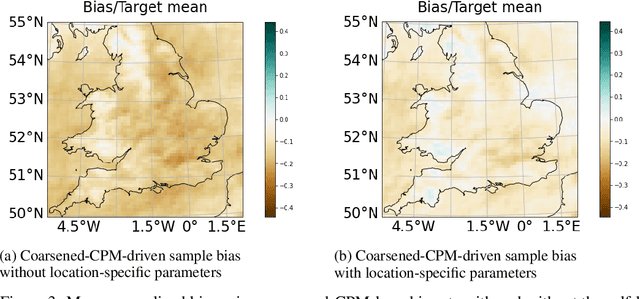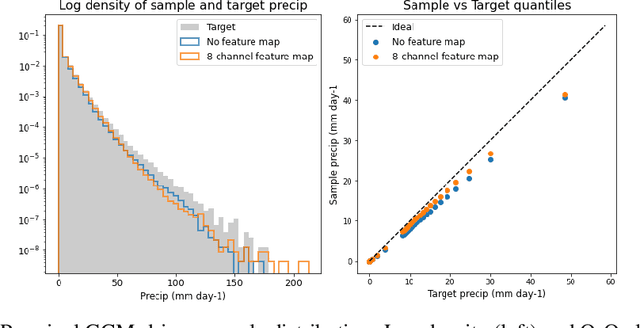Peter AG Watson
TCP-Diffusion: A Multi-modal Diffusion Model for Global Tropical Cyclone Precipitation Forecasting with Change Awareness
Oct 17, 2024Abstract:Precipitation from tropical cyclones (TCs) can cause disasters such as flooding, mudslides, and landslides. Predicting such precipitation in advance is crucial, giving people time to prepare and defend against these precipitation-induced disasters. Developing deep learning (DL) rainfall prediction methods offers a new way to predict potential disasters. However, one problem is that most existing methods suffer from cumulative errors and lack physical consistency. Second, these methods overlook the importance of meteorological factors in TC rainfall and their integration with the numerical weather prediction (NWP) model. Therefore, we propose Tropical Cyclone Precipitation Diffusion (TCP-Diffusion), a multi-modal model for global tropical cyclone precipitation forecasting. It forecasts TC rainfall around the TC center for the next 12 hours at 3 hourly resolution based on past rainfall observations and multi-modal environmental variables. Adjacent residual prediction (ARP) changes the training target from the absolute rainfall value to the rainfall trend and gives our model the ability of rainfall change awareness, reducing cumulative errors and ensuring physical consistency. Considering the influence of TC-related meteorological factors and the useful information from NWP model forecasts, we propose a multi-model framework with specialized encoders to extract richer information from environmental variables and results provided by NWP models. The results of extensive experiments show that our method outperforms other DL methods and the NWP method from the European Centre for Medium-Range Weather Forecasts (ECMWF).
Machine learning emulation of precipitation from km-scale regional climate simulations using a diffusion model
Jul 19, 2024



Abstract:High-resolution climate simulations are very valuable for understanding climate change impacts and planning adaptation measures. This has motivated use of regional climate models at sufficiently fine resolution to capture important small-scale atmospheric processes, such as convective storms. However, these regional models have very high computational costs, limiting their applicability. We present CPMGEM, a novel application of a generative machine learning model, a diffusion model, to skilfully emulate precipitation simulations from such a high-resolution model over England and Wales at much lower cost. This emulator enables stochastic generation of high-resolution (8.8km), daily-mean precipitation samples conditioned on coarse-resolution (60km) weather states from a global climate model. The output is fine enough for use in applications such as flood inundation modelling. The emulator produces precipitation predictions with realistic intensities and spatial structures and captures most of the 21st century climate change signal. We show evidence that the emulator has skill for extreme events up to and including 1-in-100 year intensities. Potential applications include producing high-resolution precipitation predictions for large-ensemble climate simulations and downscaling different climate models and climate change scenarios to better sample uncertainty in climate changes at local-scale.
Machine learning emulation of a local-scale UK climate model
Nov 29, 2022



Abstract:Climate change is causing the intensification of rainfall extremes. Precipitation projections with high spatial resolution are important for society to prepare for these changes, e.g. to model flooding impacts. Physics-based simulations for creating such projections are very computationally expensive. This work demonstrates the effectiveness of diffusion models, a form of deep generative models, for generating much more cheaply realistic high resolution rainfall samples for the UK conditioned on data from a low resolution simulation. We show for the first time a machine learning model that is able to produce realistic samples of high-resolution rainfall based on a physical model that resolves atmospheric convection, a key process behind extreme rainfall. By adding self-learnt, location-specific information to low resolution relative vorticity, quantiles and time-mean of the samples match well their counterparts from the high-resolution simulation.
 Add to Chrome
Add to Chrome Add to Firefox
Add to Firefox Add to Edge
Add to Edge